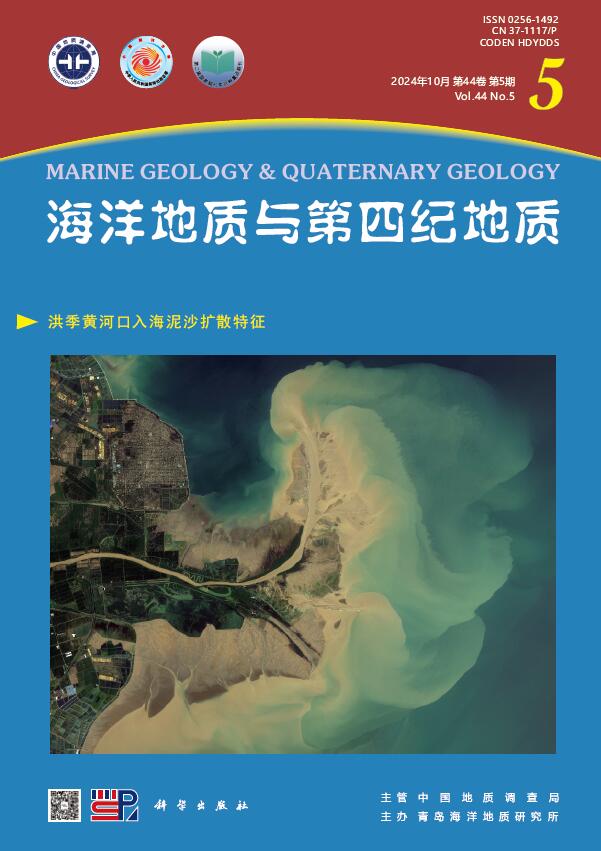中国东北科尔沁沙丘地带黄土沉积Rb/Sr地球化学特征及其对晚第四纪气候变化的指示:中国东北科尔沁沙丘地带黄土沉积Rb/Sr地球化学特征及其对晚第四纪气候变化的指示
引用次数: 2
摘要
风成粉砂沉积是晚第四纪古气候和古环境变化的良好记录。然而,对科尔沁沙丘场晚第四纪的黄土沉积与古气候变化的认识尚不清楚。本文分析了科尔沁沙丘带南缘典型黄土层序的铷、锶地球化学特征。结果表明,科尔沁黄土中Rb-Sr含量的变化规律与中国黄土高原相似,只是Rb含量较低,Sr含量较高,这可能是由于研究区气候偏冷偏干燥,化学风化作用非常弱所致。进一步表明,东北黄土层序Rb/Sr比值的变化可能代表了东亚夏季和冬季季风气候的交替。基于Rb-Sr地球化学资料,认为科尔沁沙丘区在108 ~ 144 ka(86±7 ka)和233±21 ka期间经历了较为温暖湿润的气候,而在262±32 ka期间则非常寒冷和干燥,甚至比沙漠化环境更严重。研究区气候变化与东亚晚第四纪季风的变化相一致。这可能是中国东北地区全球冰期-间冰期气候变化的足迹。本文章由计算机程序翻译,如有差异,请以英文原文为准。
Rb/Sr GEOCHEMISTRY OF LOESS DEPOSITS IN THE HORQIN DUNEFIELD, NORTHEASTERN CHINA, AND ITS IMPLICATIONS FOR CLIMATE CHANGE DURING LATE QUATERNARY: Rb/Sr GEOCHEMISTRY OF LOESS DEPOSITS IN THE HORQIN DUNEFIELD, NORTHEASTERN CHINA, AND ITS IMPLICATIONS FOR CLIMATE CHANGE DURING LATE QUATERNARY
The aeolian silt deposit is a good record of palaeoclimatic and paleoenvironmental changes in Late Quaternary.However,Loess deposition and Palaeoclimatic changes in the Horqin dunefield,Northeastern China,during the late Quaternary remains poorly understood.In this paper,the Rubidium(Rb) and Strontium(Sr) geochemical characteristics of the typical loess sequence in the southern margin of the Horqin dunefield are analyzed.Results show that the variation pattern of Rb-Sr in the Horqin loess are similar to those of the Chinese Loess Plateau,excepted for that the Rb content is lower and the Sr content is higher,probably resulted from the colder and drier climate in this study area,which led to very weak chemical weathering.It further indicates that the variations in Rb/Sr ratio in the Northeastern China loess sequence may represent the alternation of East Asian summer and winter monsoon climates.Based on the Rb-Sr geochemical data,it is suggested that Horqin dunefield had experienced a warmer and wetter climate in the periods of 108-144 ka 86±7 ka,and 233±21 ka,while it was very cold and dry,even worse than the desertification environment in the period of 262±32 ka.The climate changes in this study area are consistent with variations of the East Asian monsoon during Late Quaternary.It could be a footprint of the global glacial-interglacial climatic variations in northeastern China.
求助全文
通过发布文献求助,成功后即可免费获取论文全文。
去求助
来源期刊
CiteScore
0.10
自引率
0.00%
发文量
4176
期刊介绍:
Marine Geology and Quaternary Geology launched in 1981 is a bimonthly academic journal sponsored by Qingdao Institute of Marine Geology, China Geological Survey, and published by the Science Press, China.The journal aims to publish original, cutting-edge, and explorative scientific results in the field of marine geology and sea-land Quaternary geology. The journal focus on reporting the latest research achievements supported by National Natural Science Foundation Project, National Key Project and International Cooperation Project, with priority to the results in China seas, global ocean and three poles, and the comparative study results between offshore and land, regional and global scientific issues.

 求助内容:
求助内容: 应助结果提醒方式:
应助结果提醒方式:


